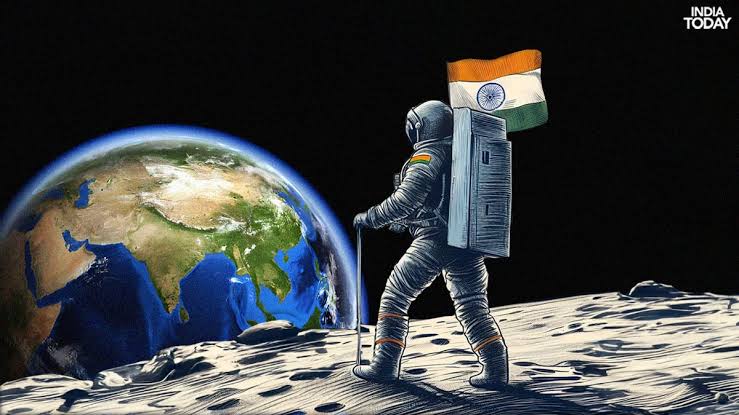Indians to land on Chandrama by 2040

Shri Jitendra Singh, Union Minister of State (Independent Charge) for Science and Technology clearly stated the National goal of sending an Indian landing the first Indian on Chandrama by 2040.
The MoS said that the Union Budget 2024-25 relating to the space sector have a futuristic vision. As a first step to Chandrama landing, Indian Gandanyatri will be in Prithvi orbit in 2025 itself. Thereafter the Indian space station — Bharatiya Antariksha Station (BAS) — is expected to be set up and running by 2035.
In 2023, we saw an investment of ₹1,000 crore. The projection is that the space economy will grow five times in the next 10 years or around INR 37.4 Kharab or INR 374000 Crores. This is also expected to prevent “talent that might have gone abroad”
Singh informed that Gaganyaan — India’s first human spaceflight mission — delayed due to Covid, will take flight next year. “The trial flights are going on,” he said.
In addition, India is also aiming to send “robot flights, where a female robot, Vyommitra, will be sent to space in 2025”.
The robot will do all the activities of an astronaut, return to Earth, and be extracted from the landing craft.
Further, citing the 2023 New Space policy, the Minister said it has liberated the sector in India and has also boosted digital space start-ups — from just one in 2021 to nearly 300
Singh noted that the policy opened doors for the private sector to participate in ISRO’s activities, and helped the sector to achieve new heights.
“The 2023 new space policy was a watershed moment. For the first time, the private sector was allowed to participate in ISRO’s activities,” the minister said while speaking to the media.
“From one digital startup in the Space sector in 2021, we are nearing 300 now,” he added, noting some are “world-class, many are entrepreneurial stories”.
He also pointed out to In-SPACe set up in 2020, as an interface between the government and private sector; and the New Space India aimed to produce and assemble launch vehicles.
He mentioned AgniKul Cosmos which recently launched the world’s 1st rocket with a fully 3D-printed engine. Reinforcing the ISRO infrastructure, they have also set up a private launchpad on the ISRO premises, the Minister said.
Further, another space startup Skyroot, which carried out the first-ever private sub-orbital launch, is now working on being the first to develop a rocket in the private sector, he noted.
“All this is placing India as a frontline player in the private sector,” the MoS said, adding that “global companies like SpaceX are reaching out to India”.




